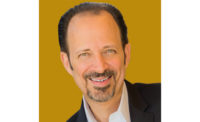A Clearer Picture
Why outdoor video surveillance is becoming more practical in monitoring applications.

Cutting-edge technology that delivers what it promises is always a big draw in an industry that relies on protecting life and property. Affordable, accurate and reliable are three words that excite professional monitoring companies.
Last October at The Monitoring Association’s (TMA) annual meeting, the board unanimously approved of including surveillance as part of the video verification committee’s focus to create a community of TMA members who collaborate about best practices on the use of emerging technologies in the deployment of video. This activity supports law enforcement to reduce crime and protect the safety and property of customers.
Initially seen as more trouble than it was worth, bugs on cameras, wildlife, wind and weather triggering alerts, as well as low-resolution images, are now all problems of the past. With dependable and affordable equipment readily available, video surveillance is now within reach for most professional monitoring companies.
Here’s how and why it’s happening.
Video intrusion detection offers consistent results. By using heat-sensing cameras (thermal video) for detection, coupled with high-definition color video for alarm verification, along with video stabilization and scene calibration, an operator at a monitoring center is alerted with an accurate alarm and can discern not only that there is a person in the scene, but also what they are wearing and carrying. These details are important data points that, when shared with law enforcement, provide details that were once simply noted as a possible intruder.
In the past, thermal cameras were too cost-prohibitive and did not have enough processing power. Today, software makes low-cost thermal imagers reliable intrusion detectors. Smarter analytics catch the bad guys with very few false alarms. Companies can pass these savings down to their customers, offering higher quality services at competitive prices.
Through software programming and the application of artificial intelligence, cameras are literally providing a clear picture of what is happening at a protected location. We have the technology now to discern whether an image is a person or an animal with a very high level of certainty. We can see further, and in more detail, than ever before. By offering an almost perfect human detector system, in a wide range of environmental conditions, we can now expand our services to include remote surveillance/video monitoring.
In an industry where false alarm reduction is a priority, technology is stepping up. By reducing unwarranted signals at the source, professional monitoring centers’ automation systems are able to focus on the credible alarms associated with intrusions and operators can focus on verifying alarms before requesting help. This ability to have a real-time, eyewitness account is a win-win situation for the industry.
Steve Walker, vice president monitoring operations in the U.S. for Stanley Convergent Security Solutions Inc. and Rob Baxter, president and CEO of Radius Security and Vancouver Fire in Canada, are taking the lead as co-chairs of this task force dedicated to improving video services and creating business opportunities for the professional monitoring industry. For more information, contact education@tma.us.
Ivan Spector is president of Montreal-based Alarme Sentinelle/Sentinel Alarm. Sentinel has been in the monitoring business for over 40 years and is a full service custom design ULC listed and 5 Diamond certified monitoring station. Currently, he serves as president of The Monitoring Association (TMA) and was a founding board member of the Security Industry Alarm Coalition (SIAC).
Looking for a reprint of this article?
From high-res PDFs to custom plaques, order your copy today!








